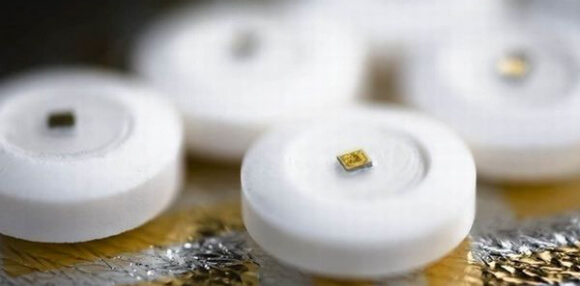Ingestible, Implantable, Or Intimate Contact: How Will You Take Your Microscale Body Sensors?

Computer chips and silicon micromachines are ready for your body. It’s time to decide how you’ll take them: implantable, ingestible, or intimate contact. Every flavor now exists. Some have FDA approval and some are seeking it. Others are moving quickly out of the research lab stage. With the round one Qualcomm Tricorder X-Prize entries due in one year, we’re soon to see a heavy dose of sensors tied to the mobile wireless health revolution.
With these sensors comes a heavy dose of information about your health, data about what medication you are taking and when you took it. The sensors are available to protect your health, but choosing how to use them and how to protect the privacy of your data will be a matter of personal responsibility.
Implantable sensors exist for a number of applications, having been used in animals for pet identification for many years. Other examples under development or seeking FDA approval are glucose detection for control of diabetes, blood pressure monitoring in people with recent cardiac arrest or risk of heart disease, and blood health. The most recently announced is implanted into animal brains with the long-term goal of enabling humans with paralysis to control machines with their minds.
These implantable sensors have this in common: they self-contain what is needed to transmit information from inside your body without batteries and without wires.
These are already shown to work; several are now seeking FDA approval. From the perspective of a patient, this is a Tricorder device, albeit one centered on an implantable micromachine sensor. If you or your doctor feel your health is at risk, I suspect you’d accept these inside your body. If your health feels not at risk however, this could be too invasive for your liking, and we’ll offer you something one level easier to accept.
Ingestible sensor chips are an idea a little easier for most people to swallow. Here are three examples. Camera pills, which pass through your digestive tract taking pictures and transmitting them out are available from Given Imaging. Available to your doctor, that is. You may have seen the commercials. But two other swallowable sensors are now on the scene. The CorTemp thermometer pill from HQInc travels through your digestive tract wirelessly transmitting your core body temperature. Useful for athletes today, and for those with occupational exposure to high temperatures. Again, this mimics a singly-capable Tricorder device where hand-held electronics receive wireless signals about the temperature inside your body. You can even watch Lance Armstrong downing the CorTemp:
A third ingestible, a wireless sensor pill from Proteus Digital Health does something simple, but vitally important: it reports that you’ve swallowed it. This first offering from Proteus is a placebo, with silicon computer chip attached. This pill, coupled to a wearable patch, which is coupled to a smart phone has been discussed here at Singularity Hub previously. When the pill hits your stomach, it transmits to your phone that you took the pill. Your phone then does whatever you would like with the data; informs your doctor, or informs a trustworthy caregiver.
If Proteus is right, and these sensors become commonplace, exponential growth in digital medicine for compliance monitoring will require as much silicon wafer manufacturing as all computer chips use today. And your phone will be filled with information about when you took your medication.
Many others are fortunate to be on no medication, don’t feel their health is at risk, and have little need for the wireless health options mentioned so far. And many remain leery of what appears invasive, hackable, and scary about implantables and ingestibles.
Our next level of comfort comes with intimate contact sensors, a wireless health option which will soon break out of the research labs. Two scientific papers of note showed the possibility of stick-on tattoo devices: John Rogers and colleagues at Illinois show several demonstration videos of these epidermal electronics; followed by UC San Diego‘s sweat pH (acidity) measurement geared towards athletes. The idea of sensors which simply contact the body is too good not to grow exponentially, and to be the leading path to winning the QTXP (acronym for Qualcomm Tricorder X-Prize). After all, the Tricorder doesn’t require micromachine implants or digital pills (as far as we know). Traditional medical apparatus which contacts the skin are accepted by most people without question. Two companies pursuing the QTXP, Scanadu and Medsensation, are publicly showing their approaches based on body contact.
With over 200 competitors, expect to see many variants of wireless implantables, ingestibles, and intimate body contact sensor ideas introduced in the coming year.
George Skidmore, Ph.D., a physicist working in micro machines and nanotechnology, is Principal Scientist at DRS Technologies. He is also a Nanotechnology Track Faculty at Singularity University.
[image: Proteus Digital Health]